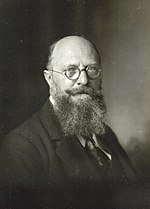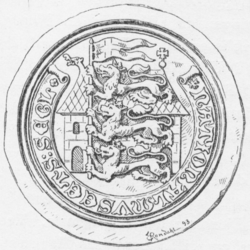Portal:Denmark
Welcome to the Denmark Portal! | ||||

|

|

| |
Denmark is the smallest and southernmost of the Nordic countries. Unified in the 10th century, it is also the oldest. Located north of its only land neighbour, Germany, south-west of Sweden, and south of Norway, it is located in northern Europe. From a cultural point of view, Denmark belongs to the family of Scandinavian countries although it is not located on the Scandinavian Peninsula. The national capital is Copenhagen.
Denmark borders both the Baltic and the North Sea. The country consists of a large peninsula, Jutland, which borders Schleswig-Holstein; many islands, most notably Zealand, Funen, Vendsyssel-Thy, Lolland, and Bornholm; and hundreds of minor islands often referred to as the Danish Archipelago. Denmark has historically controlled the approach to the Baltic Sea, and those waters are also known as the Danish straits.
Denmark has been a constitutional monarchy since 1849 and is a parliamentary democracy. It became a member of the European Economic Community (now the European Union) in 1973. The Kingdom of Denmark also encompasses two off-shore territories, Greenland and the Faroe Islands, both of which enjoy wide-ranging home rule. The Danish monarchy is the oldest existing monarchy in Europe, and the national flag is the oldest state flag in continuous use.
Selected biography

Thorvald August Marinus Stauning (26 October 1873 – 3 May 1942) was the first Social Democrat Prime Minister of Denmark.
Stauning was trained as a cigar sorter and soon became involved with trade union activity. From 1896 to 1908 he was leader of the Cigar Sorters' Union, in 1898-1904 also editor of the magazine Samarbejdet (Co-operation) of the Federation of Trade Unions, and elected Member of Parliament (Rigsdagen) in 1906.
In 1910 he was elected chairman of the Social Democratic Party (Socialdemokratiet), a position he retained for almost thirty years, until 1939. He became Prime Minister in 1924 - leading a minority cabinet which would survive until 1926. His cabinet was considered ground breaking not only as it was the first purely Social Democratic cabinet, but also because a woman, Nina Bang, was appointed Minister of Education, which attracted some international attention.
From 1929 he led a successful coalition cabinet with the Danish Social Liberal Party that would steer Denmark out of the Great Depression, shaping a major political compromise that greatly improved the Danish economy, and also transformed the Social Democratic Party from a class party to a popular party.
Recently selected: Nicolas Steno - Knud Rasmussen - Johan Ludvig Heiberg
Selected picture

Illustration from an article Fra den sidste Tid written by Erik Schiødte and published in "Tidsskrift for Kunstindustri", 1893
Selected article
The body of the Haraldskær Woman is remarkably preserved due to the anaerobic conditions and tannins of the peat bog in which she was found. Not only was the intact skeleton found, but also the skin and internal organs. Her body lies in state in an ornate glass-covered coffin, allowing viewing of the full frontal body, inside the Church of Saint Nicolas in central Vejle, Denmark.
After discovery of the body, early theories of her identity centered around the persona of the Norwegian Queen Gunhild, who lived around 1000 AD. Most of the bog bodies recovered indicate the victim died from a violent murder or ritualistic sacrifice. These theories are consistent with the body being hurled into a bog as opposed to burial in dry earth.
Selected place
With a population of 89,071 (1 January 2010), the Kolding municipality is the seventh largest in Denmark. The city itself has a population of 57,197 (1 January 2011) and is also the seventh largest city in Denmark.
Kolding is well known as the location of the former royal castle of Koldinghus which was built in the 13th century. The castle is now a museum and tourist attraction.
Categories
Denmark topics
Things you can do
- Expand stubs:
Geography stubs · People stubs · Denmark stubs in general
Help us extend these stubs and make them real articles!
- Categorize:
Help us categorize Denmark-related articles
- WikiProjects:
Have a look at WikiProject Denmark, WikiProject Faroe Islands, WikiProject Greenland and WikiProject Norse history and culture
- Noticeboard:
Have a look at the Danish Wikipedians' notice board
- Geotag:
Find coordinates for these locations and tag them: articles missing geocoordinate data
Related portals
Northern Europe
Other countries
Associated WikiMedia
The following Wikimedia Foundation sister projects provide more on this subject:
-
Commons
Free media repository -
Wikibooks
Free textbooks and manuals -
Wikidata
Free knowledge base -
Wikinews
Free-content news -
Wikiquote
Collection of quotations -
Wikisource
Free-content library -
Wikispecies
Directory of species -
Wikiversity
Free learning tools -
Wikivoyage
Free travel guide -
Wiktionary
Dictionary and thesaurus













